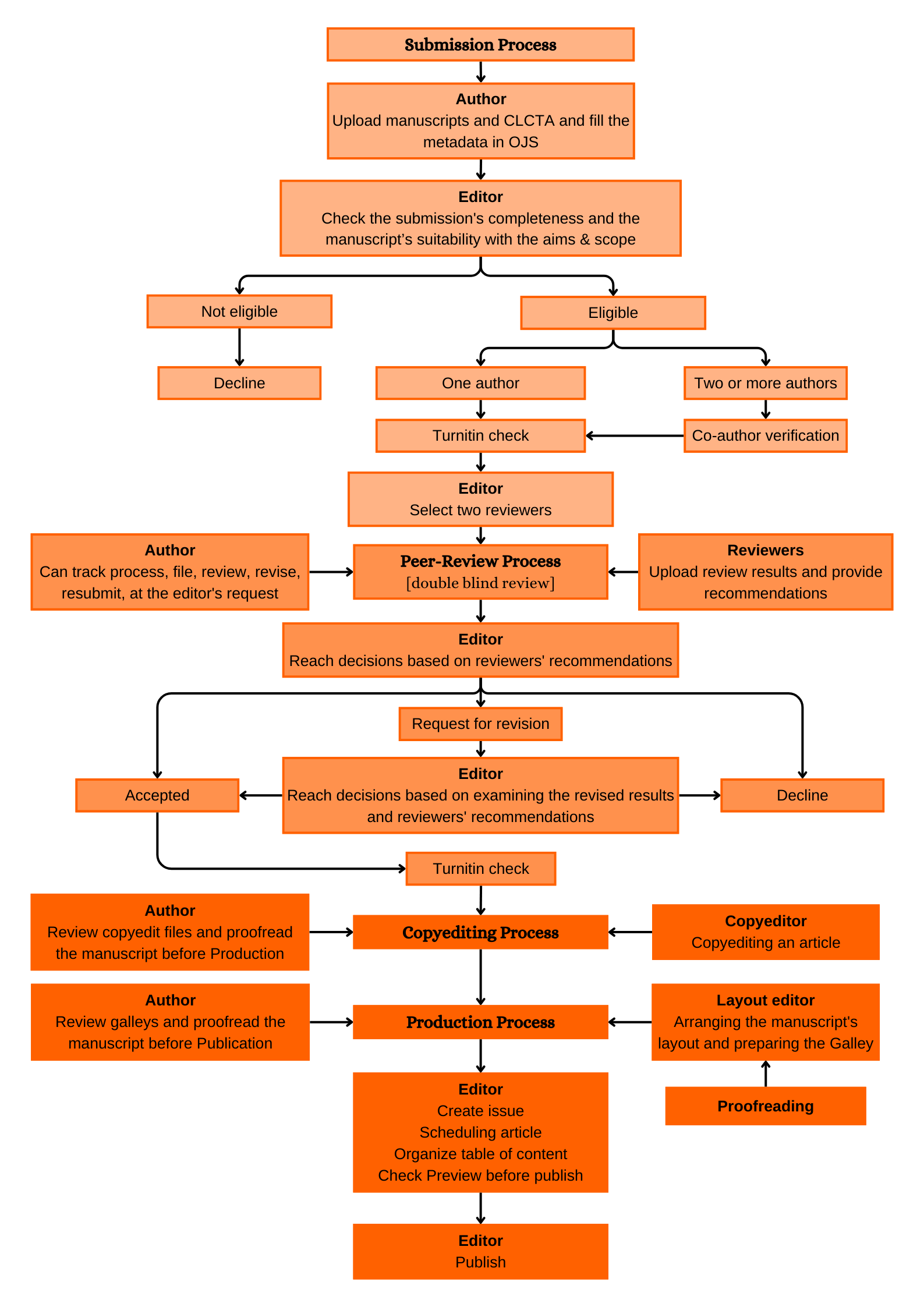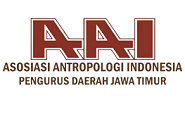Guide for Authors Online Submission Privacy Statement Manuscript Template Cover Letter and CTA Template
Publishing Process

Submission Process
Authors submit manuscripts, including a Cover Letter and Copyright Transfer Agreement (CLCTA), and complete the metadata in the Open Journal System (OJS). Section editors are automatically assigned based on the manuscript's scope category. Articles that do not comply with the requirements and omit a CLCTA will be declined through the system. The section editor will review articles that do comply with the requirements and do include a CLCTA for further review. Submissions with more than one Author will be contacted via email to confirm that the co-authors are aware that the IJSS journal is processing their manuscript. After receiving confirmation from the co-authors, the authors' manuscripts are checked using Turnitin to avoid plagiarism and the use of artificial intelligence (AI) that does not comply with journal policies (see Plagiarism Screening, Publishing Policy, and Publication Ethics). Articles that do not comply will be returned to the authors for revision within three weeks, or they will be declined. Articles that comply with the provisions will be processed for further review.
Peer-Review Process
The section editor selects two different reviewers with relevant expertise to review the same submission. Reviewers have the right to accept or decline a request to review an article from the journal, based on their expertise, conflicts of interest, and availability. Reviewers will be given approximately two weeks to review the article.
After the section editor receives and considers the review results and recommendations from the reviewers, the section editor submits a revision request to the Author or immediately accepts or declines it. The section editor will provide the Author with one week for minor revisions and three weeks for major revisions (see Peer-Review Process). Authors must revise their manuscripts according to the reviewers' suggestions and criticisms. Reviewers will receive a new version unless they choose not to participate further. Authors are allowed to request an extension of the revision period if necessary by notifying the journal either via email or a discussion message in OJS.
Revisions are reviewed and accepted in the order in which they were submitted by the authors. The decision to accept an article is based on the reviewers' recommendations and the editor's review of the article. If the editor rejects the author's revision, the author may appeal if they believe they have revised the manuscript in accordance with the reviewers' suggestions. This can be done by providing evidence in the form of a table containing the revised sentence and page and/or line numbers. Sentences that have been changed or revised should be highlighted to facilitate review. Before entering the copyediting stage, accepted articles will be checked for similarity and AI utilization using Turnitin to avoid duplication. Articles that fail the similarity and AI tests will be returned for revision or rejected.
Copyediting Process
The section editor assigns a copyeditor to copyedit articles. The copyedited manuscript will be reviewed and proofread by the Author to complete any missing sections before moving to the Production stage. Articles that have been completed and approved by the Author and Editor can proceed to the Production stage.
Production Process
The section editor assigns a layout editor to process the galley for the articles to be published. The galley will be sent to the Author and Editor for proofreading before publication. After approval by the Author and Editor, the section editor will align the article and author metadata in OJS. Then, the section editor contacts the Editor-in-Chief to initiate the publication preparation process. The Editor-in-Chief creates an issue, allowing editors to schedule articles for publication. The Editor-in-Chief also adjusts the article list and reviews articles through previews. Once the review is complete, the Editor-in-Chief will publish five articles in one issue, along with the front matter and back matter.





















